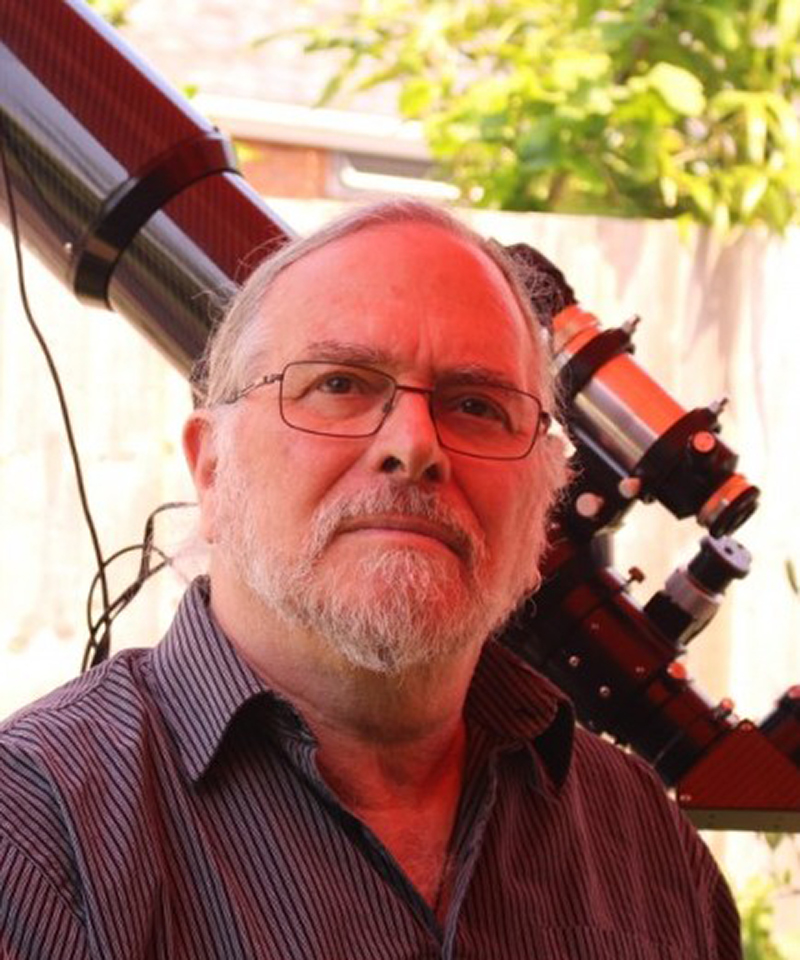If you’re looking for binoculars for birdwatching and stargazing, what features should you look for?
Despite the apparently very different demands of daytime and night-time use, most of the features that make good hand-held astronomy binoculars, such as a magnification between 7x and 10x (unless they are image-stabilised), also make good birdwatching ones.
Choose wisely, and you can have the best of both worlds.
What are good birdwatching binoculars?
The most obvious of these features is general optical and mechanical quality.
Both pursuits demand an instrument that can give you a sharp image over much of the field of view.
Unless you get premium binoculars, the image will become soft near the edges, but ideally you need it to be sharp at least in the central 70%.
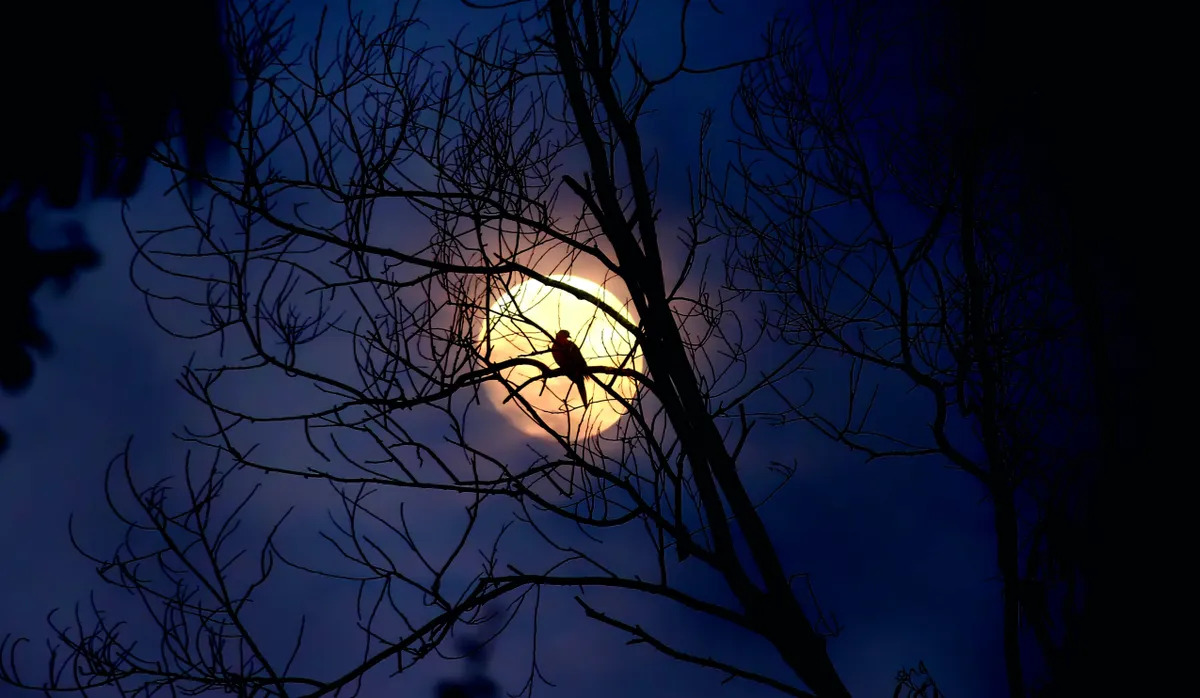
Whether you are seeking prettily coloured double stars or trying to ascertain whether the bird in the tree at the other end of your garden is a dunnock or a tree-sparrow, in addition to sharp focus you are going to need good colour fidelity.
As with focus, the false colour from chromatic aberration means that this will get worse towards the edge of the field of view.
A wide field of view helps you to find your target more easily, but it is usually more aesthetically pleasing to have a narrower field of view if that means that more of it is in good focus.
The coatings on binocular lenses reduce reflections. Light that is not reflected from a transparent surface must be transmitted, so good coatings give brighter images.
They also reduce the likelihood of spurious reflections which would otherwise degrade your view and reduce contrast.
How do I focus birdwatching binoculars?
The focus mechanism itself needs to be smooth and precise throughout its range.
You cannot easily get precise focus if the focus is too fast; ideally, you need at least a full turn of the focus wheel to take you from closest focus to infinity focus.
For birdwatching binoculars, where you change focus from near to distant targets, you definitely need centre-focus binoculars.
Whereas astronomy binoculars are used only at infinity focus, for birdwatching you may find yourself watching something that is only a few metres away, so do check that the focal range enables this.
In summary, if you’re wondering which are the best binoculars for birdwatching and astronomy, both pursuits benefit from having a sharp, contrasty image with good colour rendition and a smooth and precise focus from infinity to a few metres.
Look below for some of our suggestions for the best binoculars for birdwatching and astronomy.
Top astronomy and birdwatching binoculars
Opticron Adventurer II WP 10x42
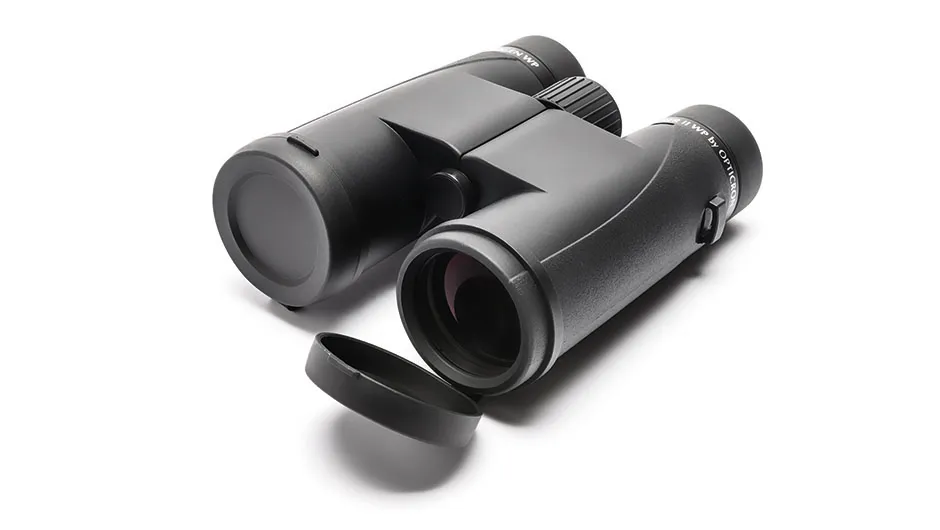
Classic birdwatching binoculars are light, compact, robust, and waterproofed, so you can use them on those wetter days.
Unusually for entry-level binoculars, the Opticron Adventurer II WP meets all of these criteria.
Although they have a bit of field curvature that affects the edge of the 5.6° field of view, the central part of the image is suitably sharp with good colour rendition.
The focus is precise and very smooth, and the right eyepiece adjustment has a useful projecting lug to facilitate its use.
The lens caps are tethered so they won’t get lost, and they fit extremely well, offering excellent protection.
Read our full Opticron Adventurer II WP 10x42 review.
Nikon Action EX 7x50
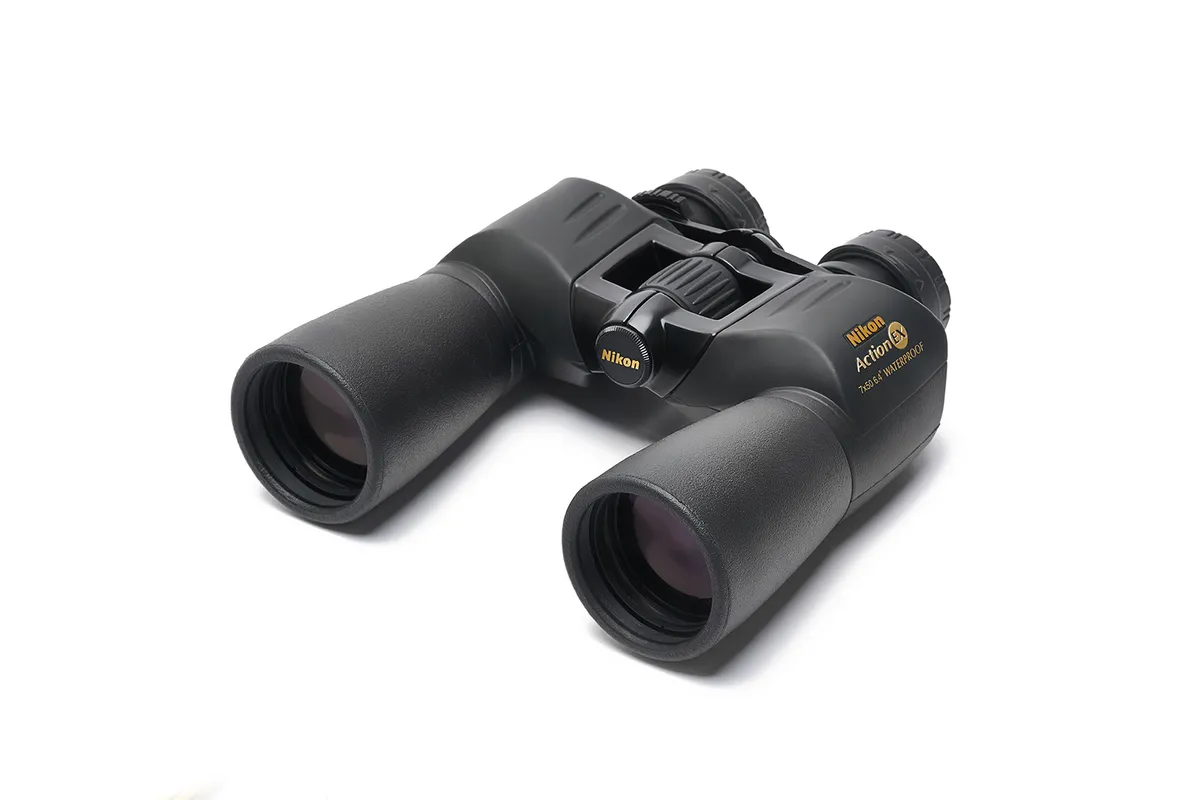
From the moment you take these binoculars out of their lightly padded case, you will notice that they ooze quality.
They have a robust feel in the hand, and everything – hinge, focusing, twist-up eye-cups – works smoothly with just the right amount of stiffness to prevent accidental readjustment.
The eyepiece rain-guard is tethered, and the objective caps can be secured to the binocular strap to prevent you mislaying them.
The image is equally impressive which snap to focus anywhere in the central 90% of its 6.4° field of view, giving a bright, crisp, contrasty image. Their real strength is exceptional low-light performance.
Read our full Nikon Action EX 7x50 review.
Pentax SP WP II 10x50
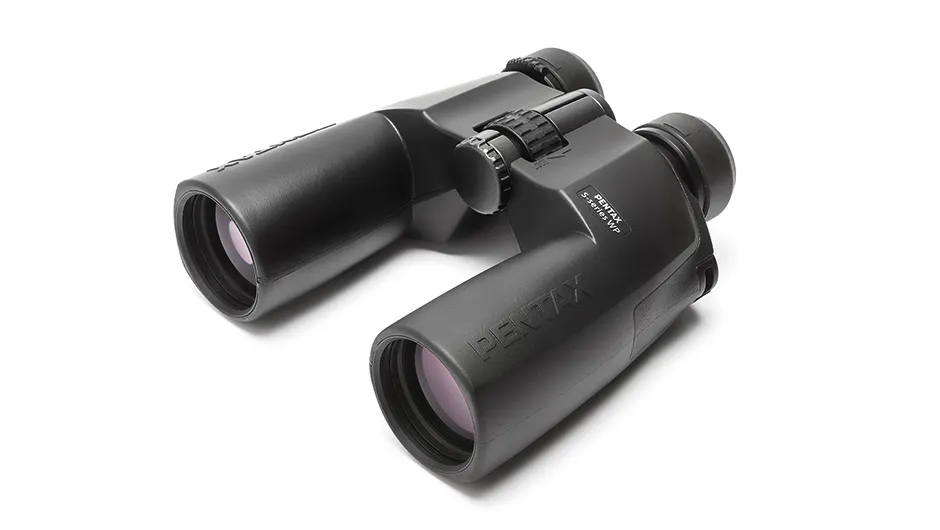
The first thing you notice about the image in these binoculars is how sharp it is: it is extremely good over the central 90% of the 5° field of view. Both the centre-focus and the right eyepiece adjustment are silky-smooth.
You’ll love the faithful colour rendition, and the well-controlled false colour, which only becomes apparent on high-contrast targets near the edge of the field of view.
They are waterproof and robust, but quite light for porro-prism binoculars.
They have a minimum inter-pupillary distance of 52mm, which makes them suitable for people with small faces or close-set eyes.
Read our list of best binoculars for astronomy.
Vortex Crossfire 10x50
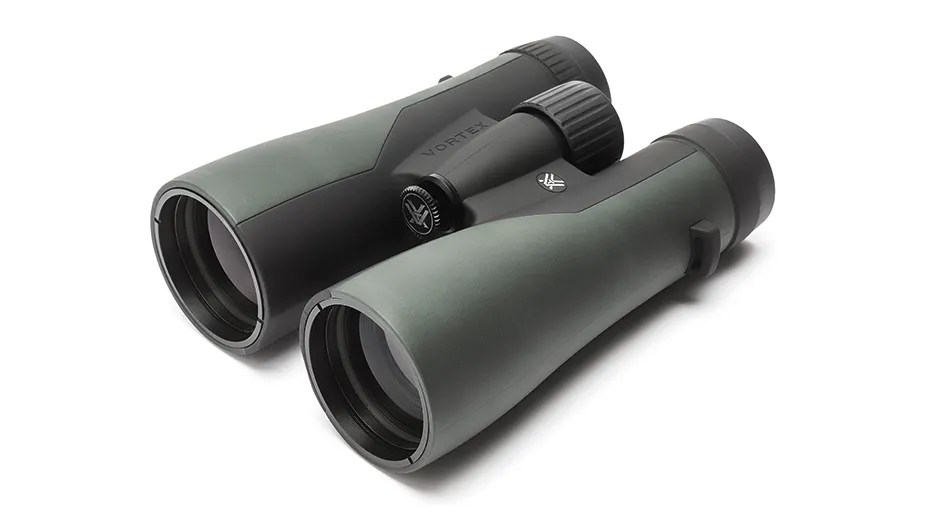
The bright image from these roof-prism binoculars makes them a good option for birdwatching at dusk and dawn.
They have an extremely smooth and precise focus, and the short-hinge design doesn’t cramp your fingers, making them very comfortable to hold.
You’ll appreciate the contrast, sharpness, and colour fidelity in the 6.1° field of view.
The colours you see are notably vibrant, enabling you to distinguish subtle differences.
However, these binoculars are only suitable for people with larger faces: their minimum inter-pupillary distance is a whopping 60.5mm, but this is an inevitable consequence if this roof-prism design used for 50mm aperture.
Read our list of best binoculars for astronomy.
Vixen Atera H 12x30
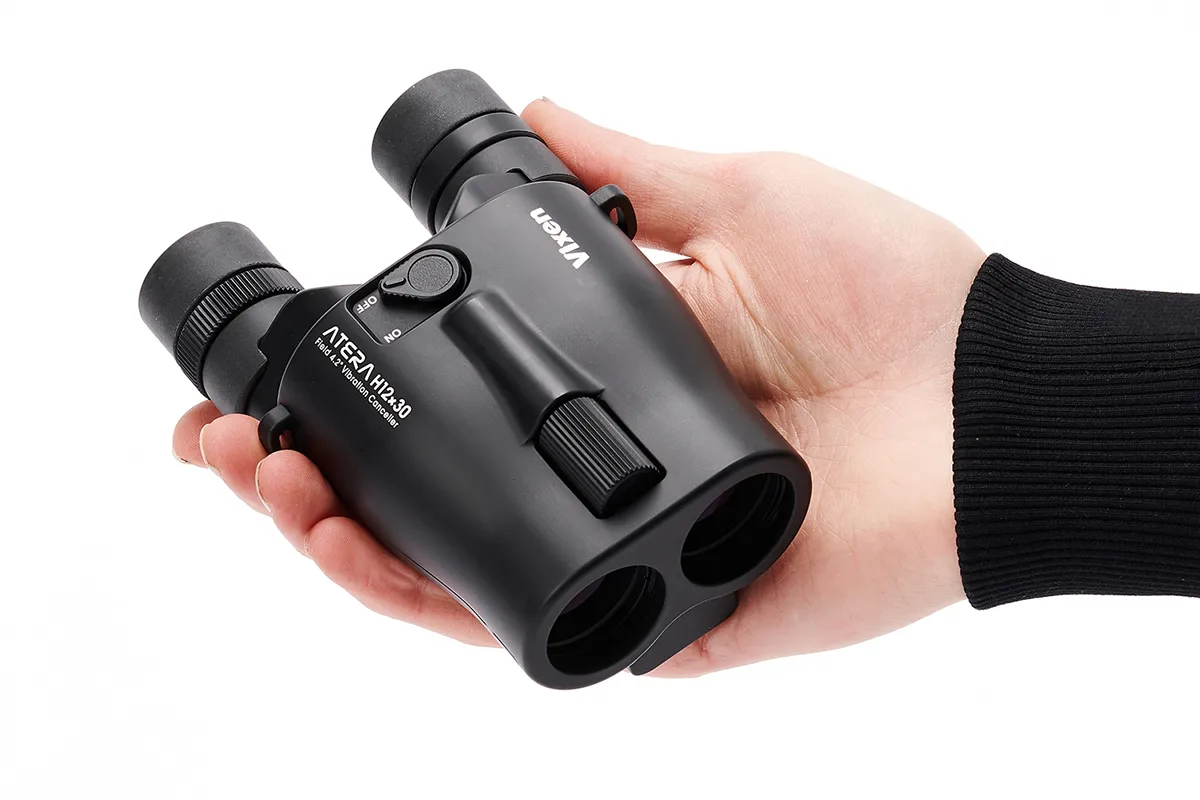
These unusual binoculars incorporate a 'vibration canceller', which is Vixen’s name for its proprietary image stabilisation system, which allows you to use higher magnifications without any shake at all.
Couple this with extremely good control of stray light and effective coatings and you get a view with high contrast and good colour rendition, and the optical quality means that you have good sharpness across the field of view.
Vibration cancelling means that not only are they very easy to focus, but also that you can easily use them one-handed. This is a boon if, for example, you like to sketch your avian targets.
Read our full Vixen Atera H12x30 stabilised binoculars review.
Canon 14x32 IS
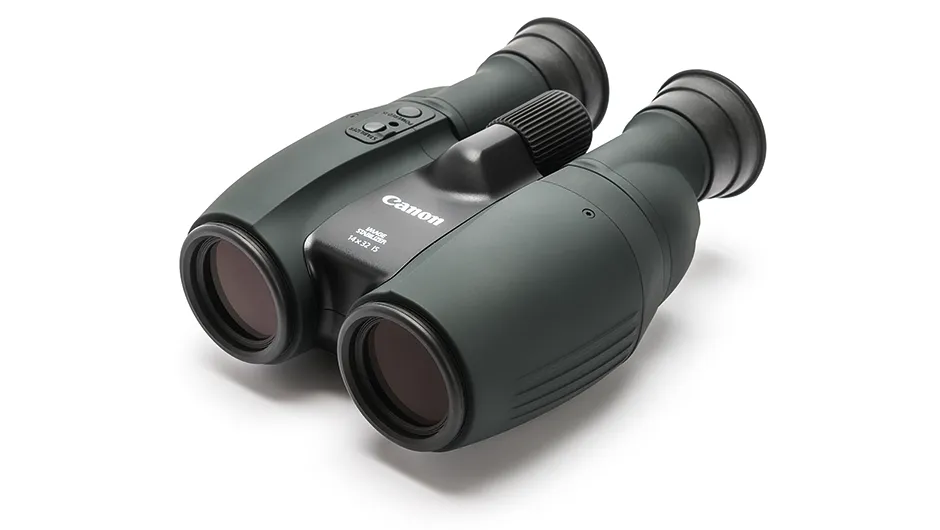
These lovely binoculars use the same image-stabilisation system that Canon uses in its top-end camera lenses, and it is superb.
It has two modes: one you use when you are holding the binoculars on target, and another for when you are panning; this latter mode makes it easier to locate your target.
Contrast and colour fidelity are extremely good, and they have a very flat field, so you get very little loss of image quality near the edge. Coupled with the 14x magnification, this enables you to see far more detail than is usual in hand-held binoculars.
Read our full Canon 14x32 binoculars review.
And finally, if you want to help support bird conservation when you view the birds and stars around you, you may want to consider looking that the RSPB binoculars on sale on their website.
